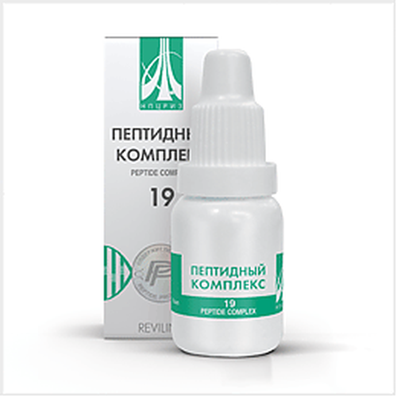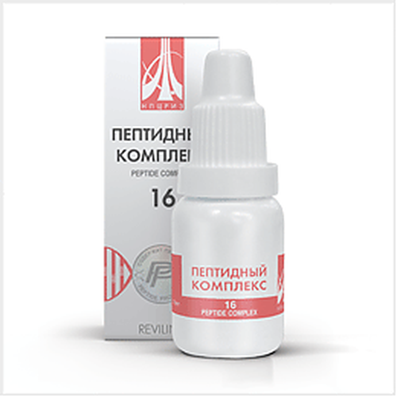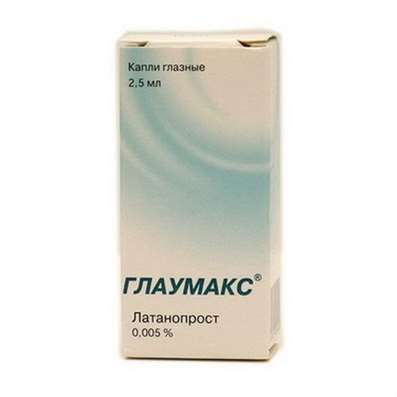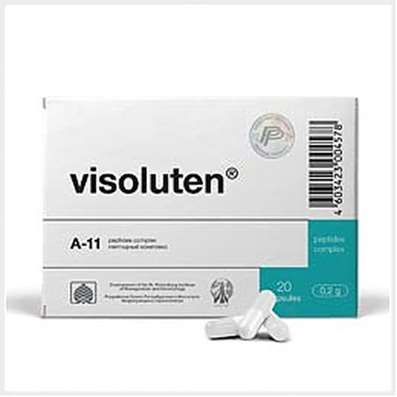Instruction for use: Relanium
I want this, give me price
Active substance: Diazepam*
ATX
N05BA01 Diazepam
Pharmacological group:
Anxiolytics
The nosological classification (ICD-10)
A35 Other forms of tetanus: Tetanus local; Tetanus; Muscle spasms in tetanus; Clostridiosis wounded; Tetanus; Hydrophobia (hydrophobia)
F10.4 Abstinent state with delirium: Alcoholic delirium; White fever alcoholic; Delirium; Delirious condition with alcoholism and drug addiction
F41.9 Unspecified anxiety disorder: Neurotic disorders with anxiety syndrome; Severe anxiety; Neurosis-like symptoms; Neuro-like disorders; Neuro-like conditions; Neuroses with anxiety symptoms; Neuroses with a sense of anxiety; Acute situational and stress anxiety; Acute attack of anxiety; Abrupt anxiety; Situational Anxiety Disorder; State of anxiety; Anxious-delirious component; Alarming state; Anxiety; Anxiety Disorders; Anxiety syndrome; Sense of anxiety; Alarm states; Chronic neurotic anxiety; Susto; Psychopathy with a predominance of anxiety and anxiety; Anxiety disorders in neurotic and neurosis-like states; Anxious neuroses; Anxious and delusional state; Acute situational stress alarm; Depressed mood with elements of anxiety
F48 Other neurotic disorders: Neurosis; Neurological diseases; Neurotic disorders; Neurotic condition; Psychoneurosis; Anxious-Neurotic Conditions; Chronic neurotic disorders; Emotional reactive disorders
G24.8.0 * Hypertonus muscular: Increased muscle tone; Increased muscle tone; Spasm of striated muscle due to organic diseases of the central nervous system; Spasticity of muscles; Painful muscle spasms in diseases of the spine; Increased skeletal muscle tone
G40 Epilepsy: Atypical convulsive seizures; Atonic seizures; Great seizures; Large convulsive seizures; Generalized Absences; Jackson epilepsy; Diffuse large seizure; Diencephalic epilepsy; Cortical and non-convulsive forms of epilepsy; Primary-generalized seizures; Primary-generalized tonic-clonic seizure; Pycnoleptic absence; Repeated epileptic seizures; Generalized attack; Seizure fit; Refractory epilepsy in children; Complicated convulsive seizures; Mixed seizures; Mixed forms of epilepsy; Convulsive condition; Convulsive seizures; Convulsions; Convulsive forms of epilepsy; Epilepsy grand mal; Epileptic seizures; Great seizures in children
G45 Transient transient cerebral ischemic attacks [attacks] and related syndromes: Ischemic neurological disorders; acute cerebrovascular insufficiency; repeated transient ischemia of the brain; Transient ischemic attack; Transitory ischemic disorder; Transient ischemic state; Transitory impairment of cerebral circulation; Transient ischemic attack; Transient ischemia; Transient cerebral ischemic attack; Transient cerebral ischemia; Transient attacks of ischemia; Transient ischemic attack; Chronic cerebral ischemia; Drop-attack; Transient ischemic attacks; Transient ischemic impairment of cerebral circulation; Ischemic brain damage; Syndrome of subclavian stealing
I10 Essential (primary) hypertension: Arterial hypertension; Arterial hypertension; Arterial hypertension of the crisis current; Hypertension essential; Essential arterial hypertension; Essential arterial hypertension; Essential hypertension; Essential hypertension; Primary arterial hypertension; Arterial hypertension complicated by diabetes mellitus; Arterial hypertension; Sudden increase in blood pressure; Hypertensive circulatory disorder; Hypertensive state; Hypertensive crises; Hypertension; Hypertension arterial; Hypertension malignant; Hypertonic disease; Hypertensive Crises; Hypertensive crisis; Malignant hypertension; Hypertensive Crisis; Exacerbation of essential hypertension; Transient arterial hypertension; Isolated systolic hypertension
I15 Secondary Hypertension: Arterial hypertension complicated by diabetes mellitus; Arterial hypertension; Sudden increase in blood pressure; Hypertensive circulatory disorder; Hypertensive state; Hypertensive crises; Hypertension; Hypertension arterial; Hypertension malignant; Hypertensive Crises; Hypertensive crisis; Hypertension; Malignant hypertension; Hypertensive Crisis; Exacerbation of essential hypertension; Transient arterial hypertension; Arterial hypertension; Arterial hypertension of the crisis current; Vasorenal hypertension; Hypertension symptomatic; Renal Hypertension; Renovascular hypertension; Renovascular hypertension; Symptomatic arterial hypertension
I73.8 Other specified peripheral vascular diseases: Intermittent claudication syndrome; Endarteritis obliterans; Acrocyanosis; Peripheral angiospasm; Obliterating endarteritis; Intermittent claudication; Disorders of innervation of blood vessels; Spasm of peripheral arteries; Arterial angiopathy; Venous insufficiency and its complications; Spasm of peripheral vessels; Spasm of the coronary vessels; Endarteritis; Cooling of the feet; Occlusion disorders of peripheral circulation; Occlusion of peripheral vessels
N94.6 Unspecified dysmenorrhea: Pain in menstruation; Pain during menstruation; Functional disorders of the menstrual cycle; Menstrual cramps; Menstruation disorder; Pain during menstruation; Painful irregular menstruation; Algodismenorea; Algomenorea; Pain syndrome with smooth muscle spasms; Pain syndrome with smooth muscle spasms (renal and biliary colic, intestinal spasm, dysmenorrhea); Pain syndrome with spasms of smooth muscles of internal organs (renal and biliary colic, intestinal spasm, dysmenorrhea); Disalgomenorrhea; Dysmenorrhea; Dysmenorrhea (essential) (exfoliative); Menstrual disorder; Menstruation painful; Metrorrhagia; Violation of the menstrual cycle; Menstrual irregularities; Prolactin-dependent disorder of the menstrual cycle; Prolactin-dependent disorder of menstrual function; Pain syndrome with spasms of smooth muscles of internal organs; Spastic dysmenorrhea; Primary disalgomenorrhea
N95.1 Menopausal and climacteric conditions in women: Atrophy of the mucous membrane of the lower sections of the genito-urinary tract caused by estrogen deficiency; Vaginal dryness; Vegetative disorders in women; Hypoestrogenic conditions; Estrogen deficiency in women in menopause; Dystrophic change in the mucous membrane in menopause; Natural menopause; Intact uterus; Climax; Men's Climax; Menopause in women; Menopause Depression; Menopause dysfunction; Climacteric neurosis; Menopause; The climacteric period complicated by psycho-vegetative symptoms; Menopausal Symptom Complex; Climacteric vegetative disorder; Climacteric psychosomatic disorder; Menopause in women; Menopausal vascular disorder; Menopausal vasomotor symptoms; Insufficiency of estrogens; Feeling of heat; Pathological menopause; Perimenopause; Menopause Period; Post-menopausal period; The postmenopausal period; Postmenopausal period; Premature menopause; Premenopause; Premenopausal period; Tides; Hot flushes; Blood flashes to the face in meno- and post-menopause; Hot flushes / sensations in menopause; Heartbeat during menopause; Early menopause in women; Disorders in menopause; Menopause syndrome; Vascular complications of climacteric period; Physiological menopause; Estrogen-deficient conditions; Menopause premature
R25.2 Cramp and spasm: Muscle spasms in tetanus; Pain syndrome with smooth muscle spasms; Pain syndrome with smooth muscle spasms (renal and biliary colic, intestinal spasm, dysmenorrhea); Pain syndrome with spasms of smooth muscles of internal organs; Pain syndrome with spasms of smooth muscles of internal organs (renal and biliary colic, intestinal spasm, dysmenorrhea); Painful muscular spasm; Mimic spasms; Muscular spasticity; Muscle spasms; Muscular spasms of central origin; Muscular spasticity; Muscle spasm; Neurological contractures with spasms; Night cramps in the extremities; Nocturnal cramps in the legs; Night cramps calf muscles; Symptomatic convulsive state; Vesta Syndrome; Spasm of smooth muscles; Spasm of smooth vascular musculature; Spasm of muscles; Spasm of striated muscle due to organic diseases of the central nervous system; Spasms of smooth muscles of internal organs; Muscle Cramps; Skeletal Muscle Cramps; Spastic states of the striated musculature; Spasmodic pain syndrome; The spastic condition of smooth muscles; Spasticity of skeletal musculature; Muscle cramp; Convulsions; Cramps of the calf muscles ; Convulsions of central origin; Convulsive condition; Convulsive Syndrome; Convulsive status in children; Tonic convulsions; Cerebral spastic syndrome; The phenomenon of a folding knife
R45.1 Anxiety and agitation: Agitation; Anxiety; Explosive excitability; Internal stimulation; Excitability; Excitation; Excitation acute; Psychomotor agitation; Hyperexcitability; Motor excitement; Cessation of psychomotor agitation; Nervous excitement; Restlessness; Night trouble; Acute stage of schizophrenia with excitation; Acute mental agitation; Paroxysm of excitation; Overexcitation; Increased excitability; Increased nervous excitability; Increased emotional and cardiac excitability; Increased agitation; Mental arousal; Psychomotor agitation; Psychomotor agitation in psychoses; Psychomotor agitation of an epileptic nature; Psychomotor paroxysm; Psychomotor fit; Symptoms of Excitation; Symptoms of psychomotor agitation; The state of agitation; A state of anxiety; Excitation status; A state of heightened concern; The state of psychomotor agitation; Conditions of anxiety; Excitation conditions; The state of excitement in somatic diseases; Excitation level; Feelings of anxiety; Emotional arousal
Z100.0 * Anesthesiology and premedication: Abdominal surgery; Adenomectomy; Amputation; Angioplasty of the coronary arteries; Carotid artery angioplasty; Antiseptic treatment of skin in wounds; Antiseptic treatment of hands; Appendectomy; Atheroctomy; Balloon coronary angioplasty; Vaginal hysterectomy; Venous bypass; Interventions on the vagina and cervix; Interventions on the bladder; Interference in the oral cavity; Reconstructive-reconstructive operations; Hand hygiene of medical personnel; Gynecological Surgery; Gynecological interventions; Gynecological operations; Hypovolemic shock during surgery; Disinfection of purulent wounds; Disinfection of the edges of wounds; Diagnostic Interventions; Diagnostic procedures; Diathermocoagulation of the cervix; Long-term surgeries; Replacement of fistulous catheters; Infection in orthopedic surgical interventions; Artificial heart valve; Kistectomy; Short-term outpatient surgery; Short-term operations; Short-term surgical procedures; Cryotyreotomy; Blood loss during surgical interventions; Bleeding during surgery and in the postoperative period; Laser coagulation Laserocoagulation; Laser retinopathy of the retina; Laparoscopy; Laparoscopy in gynecology; Likvornaya fistula; Small gynecological operations; Small surgical interventions; Mastectomy and subsequent plastic surgery; Mediastinotomy; Microsurgical operations on the ear; Mukinging operations; Suturing; Minor surgery; Neurosurgical operation; Eclipse of the eyeball in ophthalmic surgery; Orchiectomy; Pancreatectomy; Pericardectomy; The rehabilitation period after surgical operations; Reconvalence after surgical intervention; Percutaneous transluminal coronary angioplasty; Pleural Thoracocentesis; Pneumonia postoperative and post traumatic; Preparing for surgical procedures; Preparing for a surgical operation; Preparation of the surgeon's arms before surgery; Preparation of the colon for surgical interventions; Postoperative aspiration pneumonia in neurosurgical and thoracic operations; Postoperative nausea; Postoperative hemorrhage; Postoperative granuloma; Postoperative shock; Early postoperative period; Myocardial revascularization; Resection of the apex of the tooth root; Resection of the stomach; Bowel resection; Resection of the uterus; Liver resection; Small bowel resection; Resection of a part of the stomach; Reocclusion of the operated vessel; Gluing of tissues during surgical interventions; Suture removal; Condition after eye surgery; Condition after surgery in the nasal cavity; Condition after gastrectomy; Condition after resection of the small intestine; Condition after tonsillectomy; Condition after removal of duodenum; Condition after phlebectomy; Vascular Surgery; Splenectomy; Sterilization of surgical instrument; Sterilization of surgical instruments; Sternotomy; Dental surgery; Dental intervention on periodontal tissues; Strumectomy; Tonsillectomy; Thoracic surgery; Total gastrectomy; Transdermal intravascular coronary angioplasty; Transurethral resection; Turbinectomy; Removal of a tooth; Cataract removal; Removing Cysts; Removal of tonsils; Removal of myoma; Removal of mobile milk teeth; Removal of polyps; Removal of a broken tooth; Removal of the uterus; Removal of seams; Urethrotomy; Fistula of the luminal ducts; Frontoetmoidogamotomy; Surgical infection; Surgical treatment of chronic ulcers of extremities; Surgery; Surgery in the anus; Surgery on the large intestine; Surgical practice; Surgical procedure; Surgical interventions; Surgical interventions on the digestive tract; Surgical interventions on the urinary tract; Surgical interventions on the urinary system; Surgical interventions on the genitourinary system; Surgical intervention on the heart; Surgical procedures; Surgical operations; Surgical operations on veins; Surgical intervention; Vascular Surgery; Surgical treatment of thromboses; Cholecystectomy; Partial resection of the stomach; Extraperitoneal hysterectomy; Percutaneous transluminal coronary angioplasty; Percutaneous transluminal angioplasty; Coronary artery bypass grafting; Extirpation of the tooth; Extirpation of infant teeth; Extirpation of pulp; Extracorporeal circulation; Extraction of the tooth; Extraction of teeth; Extraction of cataracts; Electrocoagulation; Endourological interventions; Episiotomy; Ethmoidotomy; Complications after tooth extraction
Composition and release form
Solution for intravenous and IM introduction 1 ml; diazepam 5 mg
auxiliary substances: propylene glycol; ethanol; benzyl alcohol; sodium benzoate; Acetic acid; water for injections
in ampoules of 2 ml; in a box of 5, 10 or 50 ampoules.
Description of dosage form
Transparent colorless or yellow-green liquid.
Pharmachologic effect
Mode of action - anticonvulsant, myorelaxing, tranquilizing, sleeping, sedative.
Pharmacodynamics
Has a depressing effect on the central nervous system, which is realized mainly in the thalamus, hypothalamus and limbic system. Enhances the inhibitory effect of GABA, which is one of the main mediators of pre- and postsynaptic inhibition of the transmission of nerve impulses in the central nervous system.
Stimulates the benzodiazepine receptors of the supramolecular GABA-benzodiazepine-chloronophore receptor complex, causes a decrease in the excitability of subcortical structures of the brain, inhibition of polysynaptic spinal reflexes.
Pharmacokinetics
After the IM administration, diazepam is absorbed incompletely and unevenly (depending on the site of administration); when introduced into the deltoid muscle - absorption is rapid and complete. Bioavailability is 90%. Cmax in the blood plasma after the IM administration is achieved through 0.5-1.5 h from the time of administration and within 0.25 h with IV introduction. Equilibrium concentrations are achieved with a constant intake after 1-2 weeks.
Diazepam and its metabolites pass through the BBB and placental barriers, are found in breast milk in concentrations corresponding to 1/10 of the plasma concentration. Binding to proteins - 98%.
Metabolised in the liver with the enzyme system CYP2C19, CYP3A4, CYP3A5, CYP3A7 to pharmacologically very active desmethyldiazepam and less active temazepam and oxazepam.
It is excreted by the kidneys - 70% (in the form of glucuronides), unchanged - 1-2% and less than 10% - with mildew. T1 / 2 desmethyldiazepam - 30-100 h, temazepam - 9.5-12.4 h and oxazepam - 5-15 h. T1 / 2 may be prolonged in newborns (up to 30 h), elderly and senile patients (up to 100 h ) and in patients with hepatic-renal insufficiency (up to 4 days).
With repeated use, the accumulation of diazepam and its active metabolites is significant. Refers to benzodiazepines with long T1 / 2, excretion after cessation of treatment is slow, tk. metabolites persist in the blood for several days or even weeks.
Indications for the Relanium
Neurotic and neurosis-like disorders with anxiety manifestation (treatment).
Suppression of psychomotor agitation associated with anxiety.
Cessation of epileptic seizures and convulsions of various etiologies.
Conditions accompanied by an increase in muscle tone (tetanus, acute disorders of cerebral circulation, etc.).
Cessation of withdrawal syndrome and delirium in alcoholism.
For premedication and ataralgesia in combination with analgesics and other neurotropic drugs for various diagnostic procedures, in surgical and obstetrical practice.
In the complex therapy of hypertension, accompanied by anxiety, increased excitability, hypertensive crisis, vasospasms, climacteric and menstrual disorders.
Contraindications
Hypersensitivity to benzodiazepine derivatives, severe myasthenia gravis, coma, shock, occlusive glaucoma, addiction in history (drugs, alcohol, except for treatment of alcohol withdrawal syndrome and delirium), nighttime apnea syndrome, alcohol intoxication of various severity, acute drug intoxication, have a depressing effect on the central nervous system (narcotic, hypnotics and psychotropic drugs), severe COPD (the danger of progression of respiratory failure), acute respiratory failure awn infancy (up to 30 days), pregnancy (especially I and III trimester), breastfeeding.
With caution - petit mal or Lennox-Gastaut syndrome (with iv introduction can provoke the development of tonic epileptic status); epilepsy or epileptic seizures in the anamnesis (initiation of diazepam treatment or its abrupt withdrawal may accelerate the development of seizures or epileptic status), hepatic and / or renal insufficiency, cerebral or spinal ataxia, hyperkinesis, propensity to abuse psychotropic drugs, organic brain diseases (paradoxical reactions), hypoproteinemia, old age, depression (see "Special instructions").
Application in pregnancy and lactation
Contraindicated in pregnancy (I and III trimesters). For the duration of treatment, breastfeeding should be discontinued.
Side effects
From the nervous system: especially in elderly patients - drowsiness, dizziness, increased fatigue; violation of concentration of attention; ataxia, disorientation, dulling of emotions, slowing of mental and motor reactions, anterograde amnesia (develops more often than with other benzodiazepines); rarely - headache, euphoria, depression, tremor, catalepsy, confusion, dystonic extrapyramidal reactions (uncontrolled body movements), asthenia, muscle weakness, hyporeflexia, dysarthria; extremely rare - paradoxical reactions (aggressive outbreaks, psychomotor agitation, fear, suicidal tendencies, muscle spasm, hallucinations, anxiety, sleep disturbances).
From the hemopoiesis: leukopenia, neutropenia, agranutcytosis (chills, hyperthermia, sore throat, unusual fatigue or weakness), anemia, thrombocytopenia.
On the part of the intestine: dry mouth or hypersalivation, heartburn, hiccough, gastralgia, nausea, vomiting, decreased appetite, constipation; violations of liver function, increased activity of hepatic transaminases and alkaline phosphatase, jaundice.
From the cardiovascular system: palpitation, tachycardia, lowering blood pressure.
On the part of the genitourinary system: urinary incontinence or retention, impaired renal function, increased or decreased libido, dysmenorrhea.
Allergic reactions: skin rash, itching.
Influence on the fetus: teratogenicity (especially in the first trimester), CNS depression, respiratory failure and suppression of sucking reflex in newborns whose mothers used the drug.
Local reactions: at the injection site, phlebitis or venous thrombosis (redness, swelling and pain at the injection site).
Other: addiction, drug dependence, rarely - respiratory center depression, visual impairment (diplopia), bulimia, weight loss.
With a sharp decrease in dose and discontinuation of reception - withdrawal syndrome (increased irritability, headache, anxiety, fear, psychomotor agitation, sleep disturbances, dysphoria, spasm of smooth muscles of the internal organs and skeletal muscles, depersonalization, increased sweating, depression, nausea, vomiting , tremor, perception disorders, including hyperaemia, paresthesia, photophobia, tachycardia, convulsions, hallucinations, rarely - psychotic disorders). When used in obstetrics - in newborns - muscular hypotension, hypothermia, dyspnea.
Interaction
MAO inhibitors, respiratory analeptics and psychostimulants reduce the activity of Relanium.
With hypnotics, sedatives, narcotic analgesics, other tranquilizers, benzodiazepine derivatives, muscle relaxants, general anesthetic agents, antidepressants, neuroleptics, alcohol - a sharp increase in the CNS inhibitory effect.
With cimetidine, disulfiram, erythromycin, fluoxetine, as well as with oral contraceptives and estrogen-containing drugs that competitively inhibit liver metabolism (oxidation processes) - it is possible to slow the metabolism of Relanium and increase its plasma concentration.
Isoniazid, ketoconazole and metoprolol - slowing metabolism of Relanium and increasing its plasma concentration.
Propranolol and valproic acid increase the level of Relanium in the blood plasma.
Rifampicin can enhance the metabolism of Relanium and as a result - reduce its concentration in the blood plasma.
Inducers of microsomal liver enzymes reduce efficacy.
Hypotensive drugs can increase the severity of blood pressure lowering.
Clozapine - may increase respiratory depression.
When used simultaneously with cardiac glycosides, it is possible to increase the concentration of the latter in the serum and the development of digitalis intoxication (as a result of competitive binding to plasma proteins).
Reduces the effectiveness of levodopa in patients with Parkinsonism.
Omeprazole prolongs diazepam clearance time.
It is possible to increase the toxicity of zidovudine.
Theophylline (in low doses) can reduce the sedative effect of Relanium.
Pharmaceutically incompatible in one syringe with other drugs.
Premedication with diazepam reduces the dose of fentanyl required for an introductory general anesthesia, and shortens the time of onset of general anesthesia.
Dosing and Administration
IV, slowly, into a large vein, at a rate of 5 mg (1 ml) / min; IM.
Suppression of psychomotor excitement associated with anxiety - 10-20 mg, if necessary, repeat the dose in 3-4 hours.
With tetanus: IM or IV (spray or drip) - 10-20 mg, every 2-8 hours.
With epileptic status - 10-20 mg, if necessary, repeat the dose after 3-4 hours.
For removal of spasm of skeletal muscles: IM - 10 mg for 1-2 hours before the operation.
In obstetrics: iIMn / m - 10-20 mg with the opening of the cervix for 2-3 fingers.
Newborn (after the 5th week of life): IV slowly - 0.1-0.3 mg / kg to the maximum dose of 5 mg, if necessary, repeat the injection after 2-4 hours (depending on the clinical symptomatology).
Children from 5 years of age and older: IV slowly - 1 mg every 2-5 minutes to a maximum dose of 10 mg; if necessary, the administration is repeated after 2-4 h.
Overdose
Symptoms: drowsiness, oppression of consciousness of varying severity, paradoxical stimulation, decreased reflexes to areflexia, decreased response to painful stimuli, dysarthria, ataxia, visual impairment (nystagmus), tremor, bradycardia, lowering of blood pressure, collapse, cardiac and respiratory depression apnea) of activity, coma.
Treatment: gastric lavage, forced diuresis, the appointment of activated charcoal, symptomatic therapy (maintenance of breathing and blood pressure), artificial ventilation. Flumazenil is used as a specific antagonist in hospital settings. Hemodialysis is ineffective.
Flumazenil is not indicated in patients with epilepsy treated with benzodiazepines. In such patients, flumazenil may cause the development of epileptic seizures.
Precautionary measures
When appointing diazepam in severe depression requires special care - it is possible to use the drug for the implementation of suicidal intentions.
It is not recommended to carry out continuous intravenous infusion - it is possible to form sediment and adsorption of the preparation with PVC materials of infusion cylinders and tubes.
In renal / hepatic insufficiency and long-term treatment, control over the picture of peripheral blood and hepatic enzymes is necessary.
The risk of forming drug dependence increases with the use of large doses, a significant duration of treatment, in patients who previously abused alcohol or drugs. Without special instructions should not be used for a long time.
It is unacceptable to abruptly discontinue use because of the risk of the "withdrawal" syndrome, but due to the slow excretion of diazepam from the body, its manifestations are weaker than those of other benzodiazepines.
If such unusual reactions occur in patients, such as increased aggressiveness, psychomotor agitation, anxiety, fear, suicidal thoughts, hallucinations, increased muscle cramps, difficult sleep, superficial sleep, treatment should be discontinued.
The initiation of treatment with diazepam or its abrupt withdrawal in epileptic patients or with epileptic seizures in an anamnesis can accelerate the development of seizures or epileptic status.
Has a toxic effect on the fetus and increases the risk of developing congenital malformations when used in the first trimester of pregnancy. Admission of therapeutic doses in later periods of pregnancy can cause oppression of the fetal CNS. Continuous use during pregnancy can lead to physical dependence - there may be symptoms of "cancellation" in a newborn.
Children, especially at a young age, are very sensitive to the CNS depressing action of benzodiazepines.
It is not recommended for newborns to prescribe medications containing benzyl alcohol - possibly the development of a toxic syndrome manifested by metabolic acidosis, CNS depression, difficulty breathing, kidney failure, hypotension, and possibly epileptic seizures, and intracranial hemorrhage.
Use in doses above 30 mg for 15 hours before delivery or during labor may cause a respiratory depression in the newborn (up to apnea), a decrease in muscle tone and blood pressure, hypothermia, a weak act of sucking (so-called "sluggish child syndrome").
Elderly Relanium should be given with extreme caution and do not exceed the recommended dose.
Contraindicated the introduction of Relanium in the arterial channel because of the possible development of gangrene.
Care should be taken to assess the risk-benefit relationship for prescribing to pregnant women, as well as for patients with liver and kidney disease.
Special instructions
When using the drug should refrain from work that requires a rapid psycho-emotional reaction (driving, working with mechanisms).
During treatment with Relanium, alcohol is prohibited.
Storage conditions for Relanium
In the dark place at a temperature of 15-25 ° C.
Keep out of the reach of children.
Shelf life of Relanium
5 years.
Do not use after the expiry date printed on the package.

 Cart
Cart





